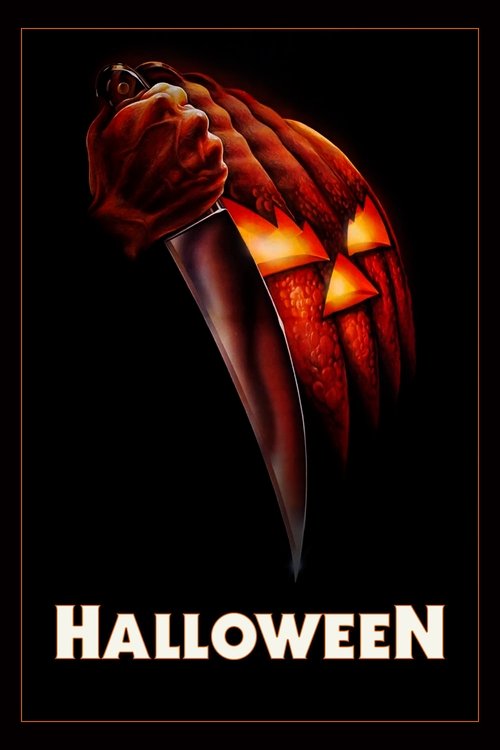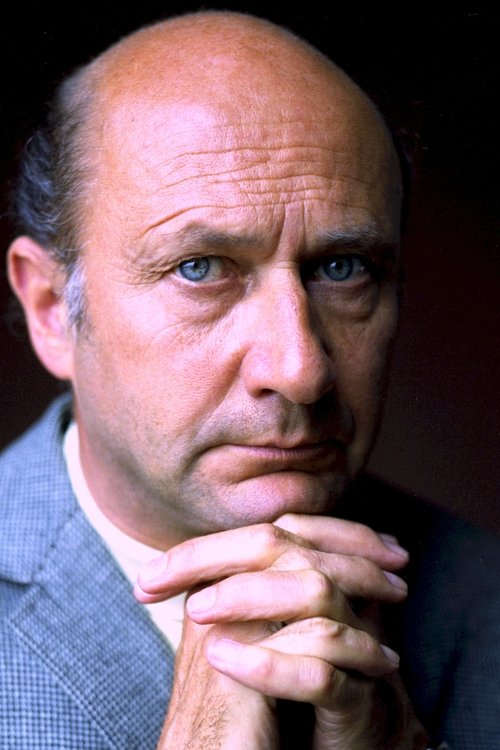
Halloween
Fifteen years after murdering his sister on Halloween Night 1963, Michael Myers escapes from a mental hospital and returns to the small town of Haddonfield, Illinois to kill again.
Dialogues from Movie Halloween
Quotes from Movie Halloween
Sound Tracks from Halloween by John Carpenter
Halloween Theme
Halloween Theme by John Carpenter, Main theme throughout the film
Don't Fear the Reaper
Don't Fear the Reaper by Blue Öyster Cult, Played during a pivotal scene with characters in a car
Download App
Memorable Scenes from Movie Halloween
The Opening Scene
The film opens with a long take that follows a young Michael Myers as he approaches his house. The tension builds as viewers see this innocent-looking child pick up a knife. The pivotal moment occurs when he brutally murders his sister, setting the tone of horror for the rest of the film. This shocking beginning establishes Michael as a cold-blooded killer right from childhood, raising the stakes for all characters involved.
Context: This scene serves to introduce the audience to the origin of Michael Myers' terrifying persona and his descent into madness.
Laurie and the Friends
Laurie Strode is shown preparing to babysit while chatting with her friends. The casual conversation about boys and teenage life builds a sense of normalcy. The pivotal moment happens when Laurie senses someone watching her. The unease creeps in with the chilling music underscoring her growing paranoia. This moment transitions the film from a light-hearted teen drama to a terrifying horror.
Context: This scene juxtaposes the innocence of teenage life with the lurking danger of Michael Myers, which enhances the film's horror.
The First Time We See Michael
The camera pans to Michael standing in the darkness as Laurie glances back. The tension peaks as he disappears just as quickly as he appears. The audience is left breathless, fully aware of the threat he poses. This moment reveals Michael’s unrelenting presence and establishes him as an omnipresent danger.
Context: This encounter starts the cat-and-mouse game between Laurie and Michael, heightening the suspense throughout the movie.
The Fake Friends
As Laurie walks home, her friends dismiss her worries about being followed. The pivotal moment comes when Michael appears directly behind her in shadow. The laughter of her friends contrasts sharply with the impending danger, showing how oblivious they are to the threat. This moment of diminished trust amplifies Laurie's isolation.
Context: It's a foreshadowing of how vulnerability and disbelief leads to fatal decisions, increasing the stakes for Laurie.
Bob’s Death
Bob goes to the house after having sex with Linda. He is met by Michael, who brutally kills him. The moment is shocking not just for the violence but for the serene calmness of the act. The audience is left horrified yet captivated by the atrocity. Bob’s death signifies Michael's complete transformation into a ruthless killer.
Context: This moment shows the dire consequences of ignoring the threat and enhances the film's horror vibe.
The Final Showdown
The climax features a chaotic showdown between Laurie and Michael. As they wrestle, the tension peaks when Laurie stabs Michael with a knitting needle. The aftermath sees Michael seemingly dead, but he gets up again, revealing his supernatural resilience. This turns the traditional horror climax into an unnerving scene filled with dread.
Context: This scene encapsulates the enduring struggle against evil and the horror of knowing it may never truly be defeated.
The Mask Reveal
When Laurie removes Michael's mask at one point during their struggle, the audience glimpses his human side. The pivotal moment occurs when he struggles to regain control after becoming vulnerable. This twisted sense of humanity shocks viewers, showing that he is not just a monster but a lost soul.
Context: This moment complicates Michael’s character, suggesting layers beyond pure evil, adding weight to the film’s overall theme of fear.
The Seek and Hiding
The iconic scene where Laurie hides in the closet while Michael searches for her creates unbearable tension. As he pushes against the closet doors, the moment peaks when Laurie's quiet breathing is contrasted against Michael's heavy presence. The visuals and sound design amplify the horror.
Context: This scene encapsulates the feelings of entrapment and fear, which are central to the film's themes.
Dr. Loomis’s Warning
Dr. Loomis delivers a dire warning about Michael's potential for violence. The moment is potent with despair as Loomis expresses his hopelessness about stopping Michael. This dialogue builds a sense of urgency as the audience realizes the danger the community is in.
Context: Loomis serves as the voice of reason and his failed warnings add a tragic layer to the story, emphasizing themes of helplessness.
The Payoff of Fear
When Laurie confronts Michael in a final act of defiance, the stakes reach their highest. Laurie’s bravery culminates in her taking a stand against her pursuer. The moment explodes in intensity as she fights back. It contrasts her previously timid character arc.
Context: This reinforces the theme of survival and character transformation, showing how fear can be overcome.
The Phone Call
Laurie learns that her friends are missing and begins to connect the dots. The pivotal moment here comes when she realizes Michael is indeed after her. The dread in her voice drives home the isolation of her situation.
Context: This adds depth to Laurie's character and shows her gradual transition from fear to determination.
The Looming Shadows
Michael lurks in the shadows while Laurie searches for her friends, creating a feeling of dread. The pivotal moment occurs when Laurie suddenly turns to see him standing ominously still. The juxtaposition of light and shadow heightens the suspense.
Context: This scene underscores the uncertainty and paranoia that defines the horror genre.
The Escape
As Laurie makes a desperate escape from Michael's clutches, the moment when she hides in the bushes is intense. The quiet anticipation of whether she'll be discovered creates a heart-stopping tension. It's a testament to her resourcefulness and will to survive.
Context: This signifies her transformation from victim to fighter and reinforces the flight-or-fight instinct.
The Discovery of the Bodies
When Laurie discovers the dead bodies of her friends, the horror becomes real. The heavy atmosphere emphasizes the gravity of Michael's killings. This moment shapes Laurie's understanding of the danger, amplifying her sense of urgency.
Context: This pivotal event deepens the narrative by connecting Laurie's fate with her friends' tragic outcomes.
The Car Chase
Laurie's frantic drive to escape becomes intense when Michael chases her in a vehicle. The pivotal moment comes when she narrowly avoids being hit. The audience feels adrenaline as this chase sequence plays out, showcasing her desperate fight for survival.
Context: This expands the film’s action element and elevates the stakes as it transitions from a horror to a survival thriller.
The First Attack
When Michael first attacks Laurie, the terror is palpable. The moment spirals into chaos as she realizes she's not just being watched, but hunted. The visceral immediacy of the attack shakes the audience and solidifies Michael’s terrifying nature.
Context: This moment serves as the transformation point for Laurie’s character from innocence to a fight for life.
The Return to Haddonfield
As Michael returns to Haddonfield, suspense builds. The atmosphere becomes thick with history and memories symbolizing his past deeds. The moment he appears in town again marks the film's escalating conflict.
Context: This sets the narrative for Michael's relentless focus on Laurie, intertwining their fates.
Loomis’s Realization
Dr. Loomis realizes the depth of Michael’s evil when he finds out Michael has escaped. The pivotal moment reveals Loomis's desperation and determination to stop him. His frantic search symbolically reflects the impending doom for the town.
Context: This moment builds a sense of urgency that adds to the impending horror awaiting Haddonfield.
The Darkness
As the night falls, the oppressive darkness creates an almost suffocating sense of dread. The pivotal scene focuses on the shadowy shapes that signify Michael’s lurking presence. This atmosphere becomes a character in its own right, amplifying the film’s fear factor.
Context: The darkness symbolizes the unknown, representing the primal fears that the film taps into.
The Stabbing Scene
The moment when Michael stabs one of his victims is visceral. The raw emotion conveyed in the struggle captures horror’s brutal reality. The aftermath leaves viewers breathless, questioning the fragility of life.
Context: This showcases the film's relentless horror and shocks the audience into a realization of mortality.
The Final Flashback
At the very end, a flashback depicts Michael's childhood. It serves as a chilling reminder of his roots. The pivotal moment of him looking through the mask at the camera conveys a haunting reflection of his lost humanity.
Context: This moment ties back to the film's core: the nature of evil and the loss of childhood innocence.
The Phone Call to the Police
Laurie's desperate call for help emphasizes her isolation and fear. The pivotal moment comes when the operator dismisses her panic. This causes frustration and helplessness, resonating deeply with the audience.
Context: It illustrates the theme of isolation during crisis and foreshadows Laurie's struggle to survive.
The Trapped Victim
When the remaining characters realize they are trapped, their fear peaks. The moment of realization captures the feeling of helplessness. It highlights the horror of the situation and leaves viewers on edge.
Context: This amplifies the fear of being hunted and amplifies the stakes of survival for the characters.
Download App










